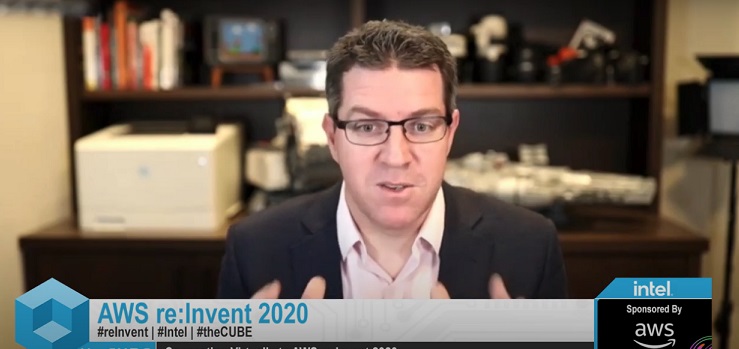 CLOUD
CLOUD
 CLOUD
CLOUD
 CLOUD
CLOUD
The stakes were raised considerably this week for industry players in the Mac mini hosting market.
Amazon Web Services Inc. announced on Monday that it would bring the Mac mini into its cloud. This means that Amazon Elastic Compute Cloud Mac instances will allow customers to run on-demand macOS workloads in the AWS cloud for the first time.
It also means that what had been a small niche industry of players engaged in Mac mini hosting were suddenly confronted with a very formidable competitor.
“The technology was there, and the customer ask was there,” said Dave Brown (pictured), vice president of Elastic Compute Cloud, EC2, at AWS. “We were able to wrap a Mac mini, without making any changes to it, with Nitro cards, plug it in a firewire to the Thunderbolt port, and actually control that device. It means you get the best of Apple hardware, which is what Apple is all about, together with the Nitro system and the cards around that, integrating with the rest of AWS.”
Brown spoke with John Furrier, host of theCUBE, SiliconANGLE Media’s livestreaming studio, during AWS re:Invent. They discussed how one customer has already taken full advantage of the new EC2 feature and continued expansion of AWS capabilities at the edge. (* Disclosure below.)
In making its announcement on Monday, AWS indicated that Intuit Inc., a financial platform company, had successfully migrated existing iOS and macOS build-and-test pipelines to AWS.
“I found out they had actually moved 80% of their production build workloads to EC2 already to run on the Mac instances, and that’s in the space of two months,” Brown said.
In addition to the Apple news, AWS announced today a continued expansion of its AWS Local Zone regional data centers. The significance of this latest move can be seen in the company’s continued push to broaden its edge networking capabilities by reducing latency.
“It spreads AWS compute capacity at the edge in all of our major metropolitan hubs,” said Brown, who also referenced the company’s continued work with telco carriers in this arena. “With Verizon, we now have eight locations around the U.S. where we have AWS compute capacity. It’s for customers who want to do inference and graphics processing on the edge, and that’s embedded into the 5G network.”
Here’s the complete video interview, part of SiliconANGLE’s and theCUBE’s coverage of AWS re:Invent. (* Disclosure: Amazon Web Services. sponsored this segment of theCUBE. Neither AWS nor other sponsors have editorial control over content on theCUBE or SiliconANGLE.)
THANK YOU